Photo / Video News & Reviews
Scubaverse Underwater Photographer Interview: Joe Daniels
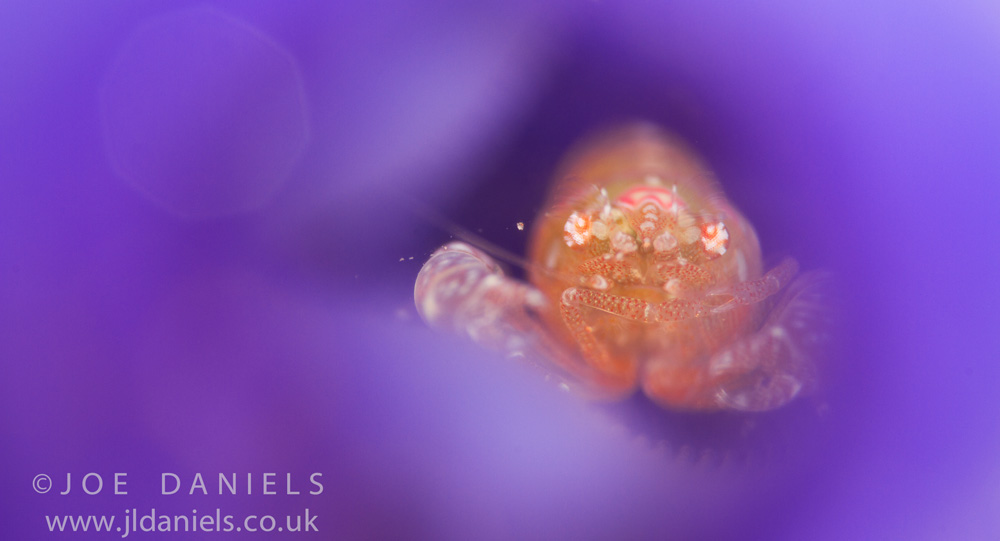
In an ongoing series, Scubaverse.com’s Underwater Photography Editors Nick and Caroline Robertson-Brown talk to underwater photographers from around the world that they admire.
This interview is with award-winning photographer Joe Daniels.
 Thank you for asking me to participate in this interview! Originally I am from Suffolk, England and I am now based in South West France. For the past ten years I have been fortunate enough to work on various different marine conservation projects and diving operations around the world. Through diving and spending a lot of time underwater I developed a passion for underwater photography. Now I can’t bear to be in the water without a camera, whether it’s a murky pond or bustling coral reef.
Thank you for asking me to participate in this interview! Originally I am from Suffolk, England and I am now based in South West France. For the past ten years I have been fortunate enough to work on various different marine conservation projects and diving operations around the world. Through diving and spending a lot of time underwater I developed a passion for underwater photography. Now I can’t bear to be in the water without a camera, whether it’s a murky pond or bustling coral reef.
My highest achieving image so far would probably be my Tunicate Shrimp which earnt gold in the Traditional Macro category in the Our World Underwater competition. I have also placed in Outdoor Photographer of the year twice, HIPA Life in Colour and World Oceans Day photo competition. A Whale Shark image of mine was used in BEIJING by Humane Society International and the Jane Goodall Institute. The exhibit, entitled “The Price Behind the Taste—Protect Sharks, Don’t Eat Shark Fins,” was to enlist public support for the protection of sharks. I was very proud to be included in this campaign.
So far in my career I have spent the majority of my time across two locations – The muck diving mecca of Ambon in eastern Indonesia and the idyllic Indian Ocean archipelago of Seychelles. The two locations could not be more different photographically which I think helps diversify my portfolio. I have also been to Raja Ampat twice in the past three years, the marine life there is astounding and is very hard to beat.
N/C: How did your underwater photography start?
JD: As soon as I left college I went and volunteered on a Marine Conservation Project in Seychelles. There I was involved in reef monitoring where we did 2 survey dives per day from Monday to Friday. This wasn’t enough in water time for me so I spent all my spare time and weekends snorkelling. One weekend I borrowed a small clear dry bag for my pentax point and shoot camera. After going out snorkelling with the camera and taking some terrible pictures of Turtles and various corals I was hooked.
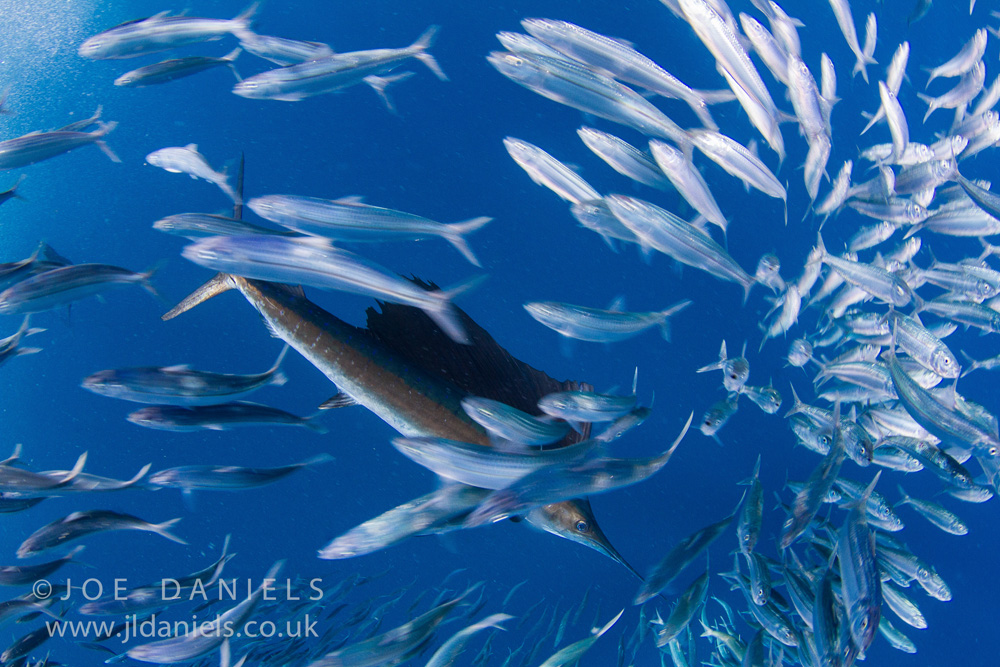
N/C: What is your favourite u/w camera equipment (past & present) & why?
JD: I love to shoot cfwa images so my Nauticam mini dome and Tokina 10-17mm fisheye is a favourite set up of mine. I have also recently acquired a Trioplan 100mm f2.8 so I am looking forward to shooting and experimenting with that later this year.
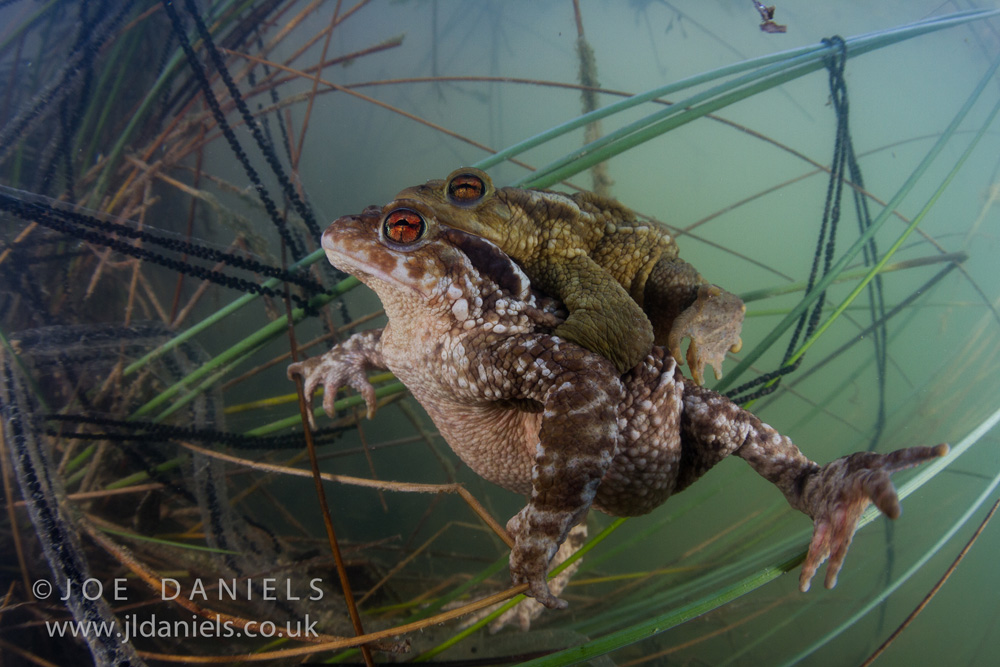
N/C: What would be your advice to anyone new to underwater photography?
JD: Not to get obsessed buying the latest and greatest camera setup. Of course buy the best you can afford, but it’s not everything. Focus on subject selection, composition and light. It also makes a huge difference if you are a comfortable and competent underwater.
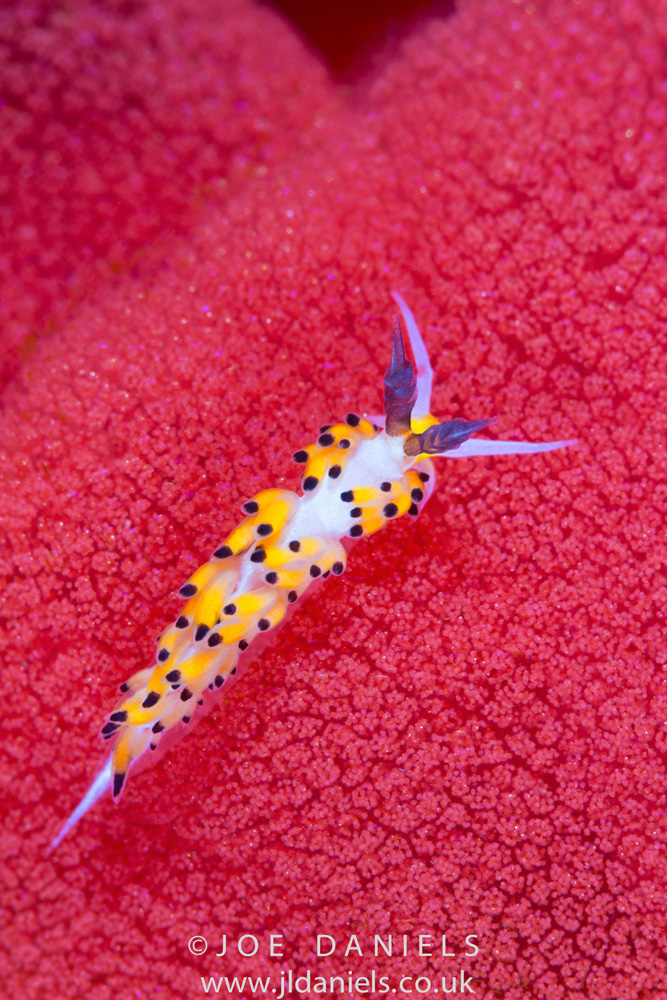
N/C: What, or who, has been your single biggest inspiration for your underwater photography?
JD: When I first started taking pictures underwater I loved to show people what I had seen whilst I was underwater, I still do. Now I like to show people things that they may have never seen before, or animals they know of but shown in a different way. I just want to share my enthusiasm for the underwater world and hopefully get others excited about it too. There are many photographers that inspire my work, notably Thomas Peschak his images continually amaze me. Alex Mustard’s images are a technical masterclass and are always a joy to behold. Eduardo Acevedo Fernandez, Laurent Ballesta and David Doubilet all produce jaw dropping images and all have large influences on my work.
N/C: Where is your favourite dive location, and is it for the photography?
JD: This is a tough question. I have favourite locations for differing reasons, and there are many places I have not had the chance to get to yet. For macro it has to be Ambon. The abundance of subjects there is endless. The thing I like most about diving in Ambon is that it’s not just macro. There are incredible jetty’s, caves, reefs and even a wreck. So photographically its fantastic. For wide angle I would have to say Misool in Raja Ampat. The health and diversity of the reef systems there are world class. It is also a massive conservation success story being protect by a patrolled no take zone which is twice the size of Singapore. The Yucatan Peninsular, Mexico also has some spectacular photographic opportunities with its Cenotes, Sailfish and Sharks. Finally Seychelles will always be a special place for me where I’ve had many special encounters.
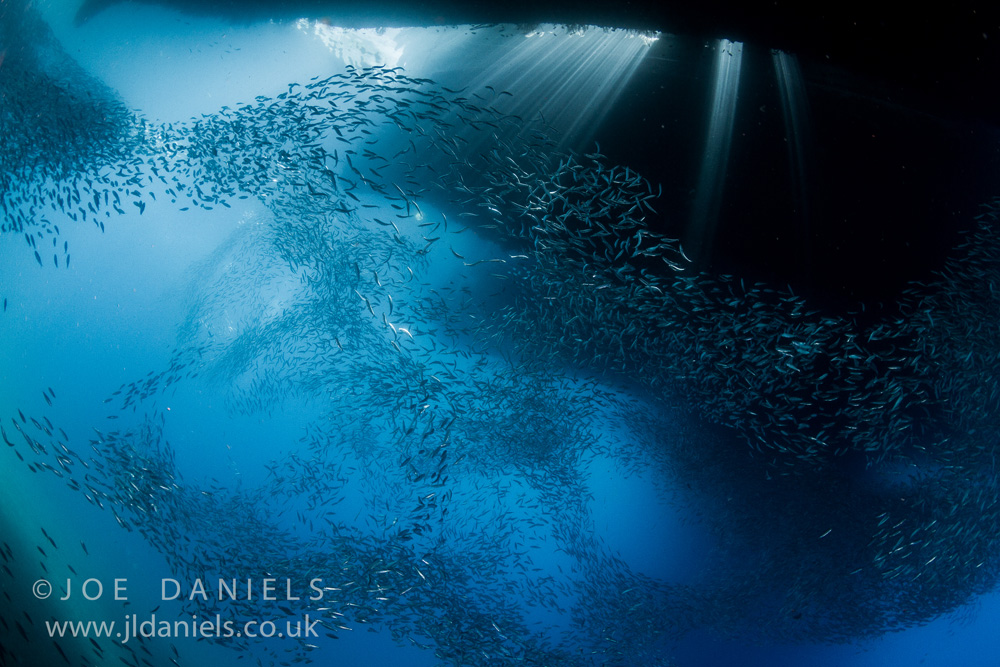
N/C: What are you views on marine life manipulation, moving subjects?
JD: With regards to moving subjects especially in macro photography I am against it. Picking animals up and moving them just for a photo is not acceptable. I would be a hypocrite if I was to say that I didn’t have images where the animal had been coaxed a little to get a better image. I think there would be very few photographers that have never coaxed a critter to a different position for a better image, if they are honest. I think with the rise of social media it has got out of hand as macro photography is very competitive now, photographers are so focused on getting as many likes as possible their ethics go out of the window a bit. On the other hand I have been on dives with photographers that are very anti manipulation and will not tolerate it at all, but will then take hundreds of pictures of one subject then swim straight over the subject wiping it out in one fin kick and not even noticing.
Every time we enter the water we make an impact, it’s what we do to reduce this impact. Don’t forget those basic diving skills you learnt in your open water course and be specially aware. Talk to your dive guide and ask them just to show you, instead of positioning. They are just trying to please you when they move things as it usually increases their tip. The dive operations can also have a code of conduct for photographers to abide by whilst diving to reduce their impact. Marine life manipulation is not isolated to macro photography. Tiger Beach is a good example, the sharks are lured in front of photographers cameras with bait for sunset splits or a perfect pass. I’m not saying I’m against shark diving practices, quite the opposite. If we can make them financially profitable sharks are much less likely to be killed for their fins. I suppose what I am trying to say it that it’s not a Black & White issue. We have to be responsible in our actions and have some foresight to ensure these amazing creatures continue to thrive and photographers can continue to photograph them. So the less we poke and prod them the more likely they are to stick around.
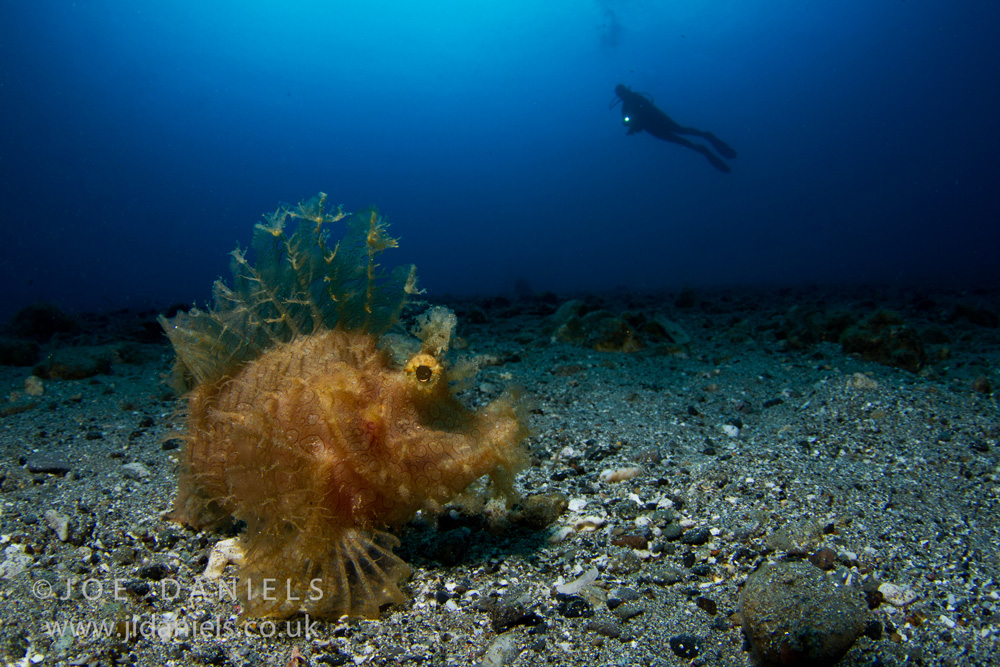
N/C: What do you look for when you are making your images?
JD: It depends on what I’m shooting and in what conditions I am shooting in. For macro I am looking for a willing subject in a good position, generally raised up off the substrate if I want a black background. What I really like to shoot is a subject with an attractive background. If there is current or surge I will try and stay away from super macro and shallow DOF. For wide angle I am always looking for the best light, I can’t resist a Indonesian jetty with shafts of light streaming through the wooden slats. When the light is good I’m looking for a subject to fill the foreground and complete the image. I also love to incorporate the surface into my images, whether it’s a split image or incorporating Snell’s window. These are usually the images that stand out to people that are not divers or spend much time underwater. I think it gives the viewer something to relate to. No matter what technique I’m using I always shoot to the conditions. Whether that means streamlining my gear to catch up with speeding Sailfish or simplifying my images when there is current. When the conditions change so does my plan for making images, this is not necessarily a bad thing. Varying conditions may diversify your portfolio. One of my favourite images is a Turtle silhouette, instead of the classic sunbeams behind it (which I was initially after) it poured with rain so it has rain drops hitting the surface filling the rest of the frame. Shooting in those conditions created an image that stands out from the rest.
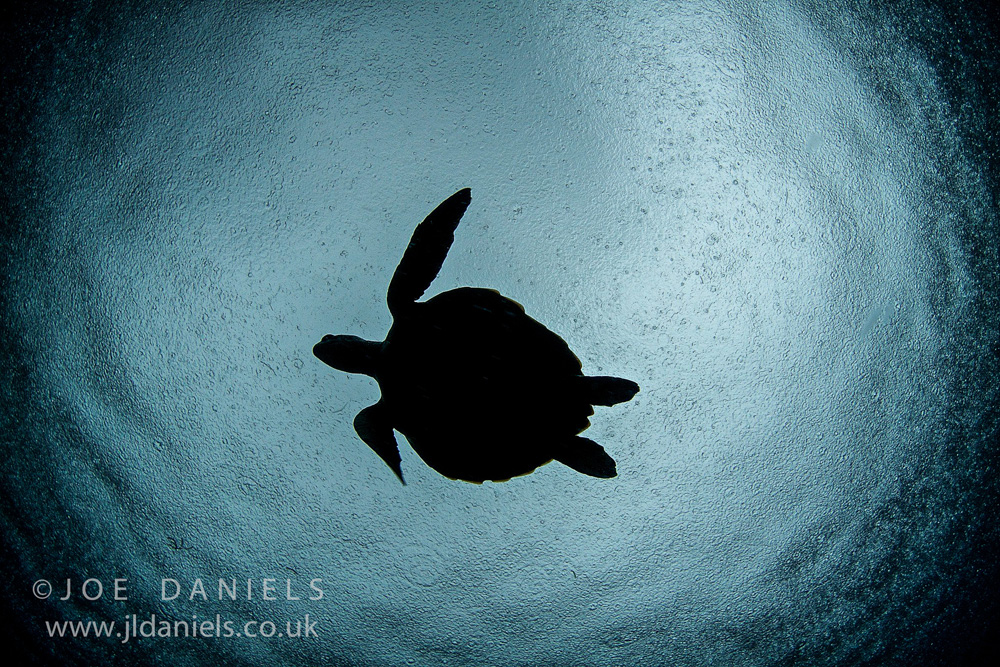
N/C: What motivates you to take u/w photos?
JD: Simply because I love it! I love the whole process of making pictures from deciding what set up to use, setting everything up and being underwater searching for a subject. I love that I can use my images to promote marine conservation issues and to just show to people how amazing the underwater world is. I’m constantly learning and driven to take better pictures.
N/C: If you could photograph any one thing/place what or where would that be?
JD: Although I have been to Raja Ampat twice I would love to go back and visit the Blue Water Mangroves of Misool. A shallow coral reef with over hanging Mangroves and shafts of light streaming through onto Barrel Sponges and Soft corals sounds incredible, everything I like to shoot all rolled into one dive site.
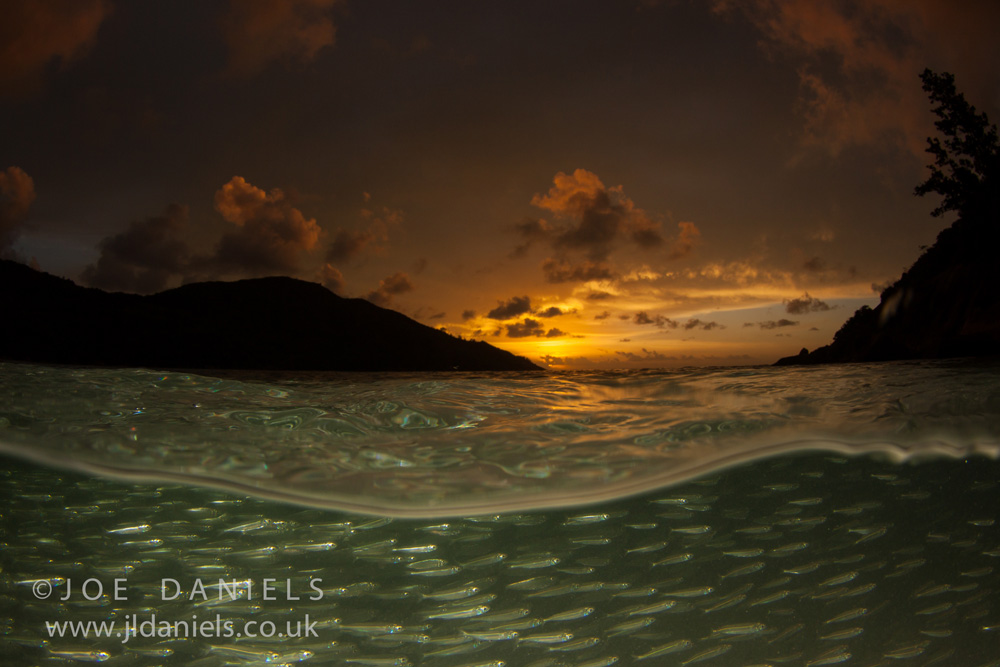
Follow the work of Joe Daniels at www.jldaniels.co.uk or on his Facebook page and instagram @j_l_daniels
Blogs
Jeff Goodman Launches Underwater Moviemaker Course with NovoScuba

Transform Your Dive Experiences into Cinematic Masterpieces
NovoScuba has partnered with acclaimed underwater filmmaker Jeff Goodman to introduce the Underwater Moviemaker Course—a revolutionary program designed to equip divers with the skills to capture the breathtaking beauty of the underwater world.
Whether you’re an aspiring filmmaker, an avid diver, or a photography enthusiast, this course offers the tools and expertise needed to create stunning underwater videos. From vibrant coral reefs to curious marine life, you’ll learn how to film, edit, and produce captivating underwater stories, all with expert guidance from a seasoned professional.
Jeff Goodman: A Legacy in Underwater Filmmaking
Jeff Goodman brings over 40 years of experience in underwater film production for television to this course. Reflecting on his career, Jeff said:
“Although technology has dramatically changed, the basics of underwater filming remain constant. This course covers crucial skills for producing great videos. Whether you’re creating professional broadcast films or high-quality hobby videos, the fundamental principles are the same.
A camera operator must master their equipment to capture those magical underwater moments effortlessly. But beyond technical know-how, underwater filmmaking is about having fun and enhancing your diving experiences. So, take your time, learn at your own pace, and enjoy this creative journey.”
About NovoScuba
Founded in 2023, NovoScuba is reshaping dive education with a comprehensive, digitally native platform. Offering cutting-edge training programs for divers at all levels, NovoScuba sets a new benchmark in the diving industry by combining innovation with accessibility.
With ISO-certified courses, a student subscription model, and multilingual support, NovoScuba ensures that dive education is inclusive and engaging. More than just a training provider, NovoScuba fosters a global community of divers committed to exploration, collaboration, and sustainability.
Join the NovoScuba Underwater Moviemaker Course Today!
Dive into the world of underwater filmmaking and start creating cinematic stories that inspire. Learn more about the course and enroll today at www.novoscuba.com/novoscuba-underwater-moviemaker-course.
EXCLUSIVE: Jeff Goodman interviews Mark Spiers, CEO of New Scuba Diving Training Agency NovoScuba
NovoScuba’s Game-Changing Approach for Dive Store Owners: WE PAY YOU!
The diving world thrives on passion and adventure, but for many dive store owners, the financial and operational challenges can be as deep as the ocean.
NovoScuba, an emerging force in the diving world, is on a mission to transform this landscape for the better. With a revolutionary approach to dive store and training agency partnerships, NovoScuba is setting new standards for how dive stores can thrive while keeping their focus on delivering exceptional diving experiences.

A New Paradigm: NovoScuba’s Bold Mission
NovoScuba’s mission is straightforward yet profound: to disrupt the traditional dynamics between dive store owners and training agencies. Traditionally, dive stores have been subjected to substantial fees charged by training agencies, for membership, materials and certifications. These costs have often placed a heavy financial burden on store owners, cutting into their profits and limiting their ability to offer competitive prices to customers.
NovoScuba flips the script by offering a model where dive stores earn money, instead of paying high fees. Dive stores receive commissions for every student they register, and their certification costs are covered. This new model not only boosts profitability but also ensures clients get top-quality training at unbeatable prices.
Financial Upsides: Earn From Student Registration
NovoScuba’s approach is simple yet revolutionary. Dive stores partnering with NovoScuba can earn commissions for every student they enroll.
Here’s how it works: For every student enrolled through NovoScuba, dive stores receive a commission. Each student enrolled will receive their e-learning materials and certification credit included in their subscription. This arrangement is a significant departure from the traditional model, where dive stores often struggle to manage high overhead costs related to training fees and certification expenses.

NovoScuba’s approach ensures that dive stores can focus on what they do best—providing top-notch diving experiences—without being bogged down by excessive financial burdens, and the need to carry large stocks of materials.
Quality Training at a Great Price
NovoScuba stands out by offering high-quality, ISO certified, training that doesn’t break the bank, in fact our students will pay less than with most competing agencies. Clients benefit from top-notch education and safety standards at competitive prices. Dive store owners can confidently promote NovoScuba’s programs, knowing they’re offering fantastic training at affordable rates. This balance of quality and affordability helps dive stores build a strong reputation and attract more customers.
Your Brand is Your Business: NovoScuba’s Commitment to Showcasing Your Identity
At NovoScuba, we understand that your brand is your most valuable asset, and we’re committed to putting it front and centre. Unlike agencies that charge high fees to promote their own brand, we believe in investing in yours. With NovoScuba, you won’t be paying to advertise someone else’s logo alone, — our focus is on showcasing your unique identity. Certifications prominently feature your brand, as well as the training agency, reinforcing your store’s image and brand every step of the way. We’re here to support and elevate your brand, ensuring that your investment directly benefits your business.
Affordable Membership: An Investment in Your Success
NovoScuba’s membership model is designed with dive store owners in mind. Membership fees are kept low and include annual Pro member fees for your team. Payment can be made monthly or annually in your local currency, avoiding the hassle of exchange rate fluctuations. NovoScuba promises no exchange rate changes without a six-month notice, ensuring financial stability and simplifying budgeting. With a membership lasting 12 months from date of joining, you’ll enjoy a full year of NovoScuba’s benefits and support.

Streamlined Operations: Simplifying Your Workload
Handling administrative tasks can be a challenge, but NovoScuba makes it easier. We’ve streamlined certification procedures and reduced paperwork to help dive stores operate more efficiently. Certification processing is quick and straightforward, allowing more focus on teaching and customer service. Our system minimises bureaucracy by storing necessary forms in student profiles, reducing paperwork and administrative delays.
Crossover Made Easy
For dive stores looking to transition to NovoScuba’s model, the crossover process is designed to be smooth and hassle-free. NovoScuba provides support to ensure that the transition is as seamless as possible, helping dive store owners integrate into the new system with minimal disruption. Experienced dive Pros don’t need to undergo extensive retraining. Our crossover is designed to familiarise Pros with NovoScuba’s user-friendly platform, standards and course structures, and not to waste time and expense re-training in water.
With just a few simple steps, you’ll be ready to offer top-notch training through NovoScuba.
Comprehensive Business Support and Training Included in Your Membership
NovoScuba goes beyond financial benefits by offering experienced support and training. This value added service includes:
- Business Training: Optimise your operations with guidance on marketing, customer service, and best practices.
- Marketing and Promotion: Access resources to attract new customers and boost your store’s visibility. Enjoy cross promotions with NovoScuba to gain increased exposure.
- Ongoing Support: NovoScuba’s commitment to its partners extends beyond initial training and setup. The company offers ongoing support to address any issues or questions that arise. This continuous support ensures that dive store owners have a reliable resource to turn to whenever they need assistance.

Embracing Digital Natives: Instant Evolution and Continuous Improvement
NovoScuba’s digital-native approach is a game-changer. Leveraging cutting-edge technology, we ensure our services evolve and improve swiftly. Dive stores benefit from instant updates, the latest features, enhancements, and effective solutions, keeping them ahead of the curve. This continuous improvement helps dive stores stay competitive and deliver exceptional services. Whether it’s a new course update, additional marketing resources, or improved e-learning functions, NovoScuba’s digital infrastructure ensures that dive stores are always equipped with the most current and effective solutions. This continuous evolution not only helps dive stores stay ahead in a competitive market but also ensures they consistently provide top-quality services to their clients.
Why Is NovoScuba Doing This? – Fair Profit Sharing for Greater Access and Growth
At NovoScuba, we’ve taken a bold step by paying commissions to stores rather than following the traditional model of training agencies charging high fees. Our mission is to make diving accessible to everyone and to foster a growing community of new divers and continued education. By redistributing profits more equitably between stores and training agencies, we aim to create a more supportive and collaborative environment within the industry. We believe this approach not only helps individual stores thrive but also stimulates overall growth and innovation in diving. Our commitment to fair profit sharing reflects our dedication to the long-term health and expansion of the diving community.

Everyone is getting a piece of the pie.
Getting Started: Join the NovoScuba Revolution
Ready to revolutionise your dive store experience? NovoScuba is here to support your journey toward reduced costs, increased profitability, and enhanced operational efficiency. Get in touch with our team to learn how NovoScuba can transform your business.
For more information, email info@novoscuba.com or visit www.novoscuba.academy.
Blogs
The Benefits of Underwater Photography Workshops

Are you just getting started out in underwater photography or are you a seasoned shooter who wants to take their images to the next level? Whatever you experience or ability, here’s an overview of underwater photography workshops.
What is an Underwater Photography Workshop?
The first thing to note is that this is not ‘school’! There are no compulsory classes and at workshops you are free to pick and choose what you take part in, or otherwise.
A huge part of learning and developing your skills is through experimentation, trial and error, responding to feedback, and honing your technique. Underwater photography workshops provide you with the perfect platform for practice and improvement.
There is no better alternative to hands on experience in an environment that is 100% dedicated to your development. Reading informative articles and watching videos on YouTube can never replace the value of one on one time with your camera rig, underwater!
Underwater photography workshops are generally structured around core components, namely: presentations, underwater practice, feedback and critique sessions, troubleshooting/one-on-one sessions, and technical support.
Other components of a workshop include dining, relaxing, and time for socializing too!

What Topics do Underwater Photography Workshops Cover?
Depending on the pro, the type of workshop and regional diving highlights, a wide range of topics may be covered from composition and lighting through to shooting techniques and editing.
Benefits of an Underwater Photography Workshop
- Improve Your underwater photography
- Learn from professionals
- Learn from other participants
- Expand your photography knowledge and understanding
- Try put new techniques
- Learn how to maximize your camera rig
- Phenomenal travel opportunities
- Memorable experience and new friendships

Underwater Photography Workshops in the Lembeh Strait, Indonesia
When it comes to underwater photography workshops that focus on shooting macro, muck diving, and unusual marine species, there can be no better destination on the planet than the Lembeh Strait.
The Critter Capital of the World, a Muck Diving Mecca, and the Twilight Zone are just a few of the names that have been given to this stretch of water over the years due to its high density, and diversity, of rare and unusual marine life.
Some of Lembeh’s most iconic species include the hairy frogfish, Pontohi pygmy seahorse, the Lembeh sea dragon, Mandarin fish, Bobbit worms, Rhinopias scorpionfish, flamboyant cuttlefish, tiger and harlequin shrimps, ornate ghost pipefish, harlequin crabs, and where do we start with octopus? Here’s just a few… wunderpus, mimic, blue ring, hairy, long arm, starry night, and coconut… and the list goes on!
Dive conditions in the Lembeh Strait can be extremely favourable for underwater photographers. There is little to no current making both moving around and remaining stationary a breeze. The comfortably warm water temperatures reduce the cold that can also set in when not on the move.
Lembeh Resort and Underwater Photography Workshops
Lembeh Resort not only offers luxury accommodation in the Lembeh Strait but it is also offers a complete suite of facilities for underwater photographers and enthusiasts. Here is a ‘snapshot’ of the camera and imaging services that are on offer at Lembeh Resort – inside and outside of underwater photography workshops:
Photography Facilities
Lembeh Resort offers a suite of facilities for underwater photographers, including:
- The only Backscatter Authorized Photo Center in Asia
- Photo Center offering camera, housing, lights and accessory rentals and purchases, onsite repairs, onsite 3D printing of small components, professional support and assistance, full workshop support
- Full time onsite Photo Pro
- Full time onsite Marine Biologists
- Marine biology and underwater photography trained Dive Guides
- Spacious camera room with individual work spaces, lights, and power points
- Varied diving options including single dives in the Lembeh Strait, two or three tank dive trips, day trips to Bangka, east coast Lembeh trips, blackwater, bonfire, night, and Mandarin fish dives.

Capturing Critters in Lembeh Underwater Photography Workshop 2025
The renowned Capturing Critters in Lembeh Underwater Photography Workshop is back in January 2025 for the 12th year running!! This unique workshop is hosted by not one but three worldclass photo professionals. The 2025 workshop features: Ron Watkins (USA), Paul Duxfield (UK), and Renee Capozzola (USA). The week-long workshop promises to be packed with incredible diving, Pro presentations, and one-on-one instruction and feedback.
2025 Workshop Schedule and Dates:
- Pre-Workshop: January 8th ––10th (time to relax and unwind after traveling and enjoy some of Lembeh’s famous dive sites.)
- Workshop: January 11th – 17th (Capturing Critters in Lembeh 12th Annual Workshop)
- Workshop Extension: January 18th – 19th (Additional Day Workshop Extension)
- Post-Workshop: January 20th – 21st (Stay additional nights and enjoy extra diving days or some time to relax and explore more of North Sulawesi)
Find Out More:
Meet the pros and find out more about the Capturing Critters in Lembeh 2025 underwater photography workshop, including prices and workshop inclusions, here:
If you are ready to book your place on the January 2025 Capturing Critters in Lembeh Underwater Photography Workshop – contact Lembeh Resort at: reservations@LembehResort.com.
-

 News2 months ago
News2 months agoIconic SS United States to become the World’s Largest Artificial Reef
-

 News3 months ago
News3 months agoBook Review – 52 Assignments: Underwater Photography
-

 Gear News3 months ago
Gear News3 months agoDYNAMICNORD – New German diving brand enters the British market
-

 News3 months ago
News3 months agoExploring Cenote El Pit: A Diver’s Dream
-

 Gear News3 months ago
Gear News3 months agoTry BARE drysuits (and maybe even win one!) this Friday with Sea & Sea at North West Dive Fest
-

 Marine Life & Conservation3 months ago
Marine Life & Conservation3 months agoBook Review: Coral Triangle Cameos
-

 Blogs2 months ago
Blogs2 months agoDive the Egyptian Red Sea this Autumn with Regaldive
-

 News3 months ago
News3 months ago2024 Ocean Art Underwater Photo Competition Announced















